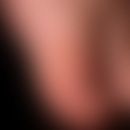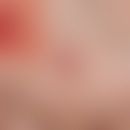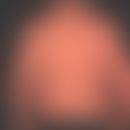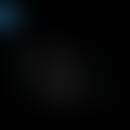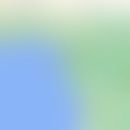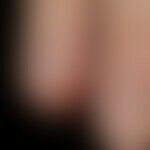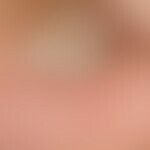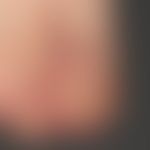Synonym(s)
DefinitionThis section has been translated automatically.
Occurrence/EpidemiologyThis section has been translated automatically.
The male sex is slightly more affected.
You might also be interested in
EtiopathogenesisThis section has been translated automatically.
Improper pedicure (round cutting of the toenails) and/or constricting footwear are frequent causes. Many patients counter the painful pressure on the lateral nail edge with a deep cutting of the nail edge. This usually leaves a small spur that progressively penetrates deeper into the lateral nail fold as the nail grows forward, causing a painful, purulent foreign body reaction. A superinfection mostly with Staph. aureus is the inevitable consequence.
Anatomical causes such as scleronychia or pincer nails or subungual exostoses.
In some patients there is a genuine tendency to the formation of an unguis incarnatus.
Furthermore, associations to diabetes mellitus, hyperhidrosis, medication (retinoids) may exist.
ManifestationThis section has been translated automatically.
The highest prevalence is found between 14 and 25 years of age.
LocalizationThis section has been translated automatically.
ClinicThis section has been translated automatically.
Clinically, an ingrown nail without signs of inflammation is distinguished from an ingrown nail with signs of inflammation. In inflammatory Unguius incarnatus the paronychium is circumscribed reddened, swollen and clearly painful under pressure. Usually the inflammatory paronychium moves over the nail plate. Frequent formation of a highly red, weeping and purulent papule (or node) of granulation tissue. It remains to be seen to what extent bacterial nail fold angiomatosis (eruptive occurrence of exophytic granulation tissue in the nail fold of several fingers; evidence of strepto and staphylococci) should be assigned an intrinsic position (see also Granuloma pyogenicum).
Differential diagnosisThis section has been translated automatically.
General therapyThis section has been translated automatically.
- At first try with tape bandage: With a firmly sticking plaster stiffener the inflamed nail walls are pulled away from the nail. This can prevent the foreign body irritation. Often prompt pain reduction.
- Alternative: Tamponade of the inflamed nail fold. The padding (packing with a cut small strip of gauze soaked with an iodine ointment) can be changed daily by the patient himself.
- Instead of a tamponade, an adapted small splint made of plastic or metal can be inserted into the lateral nail fold and left there.
- Individually adapted nail braces (orthonyxia, see nail correction brace below) are increasingly used. The legs of the spring steel wire clasps are hung under the nail edges, connected with a loop and twisted. This lifts the nail edges. The duration of treatment is about 2-3 months.
External therapyThis section has been translated automatically.
Internal therapyThis section has been translated automatically.
Operative therapieThis section has been translated automatically.
- The oval wedge excision of the nail edge and lifting of the nail edges has a high recurrence rate! should no longer be performed today.
- Especially in case of recurrence tendency the Emmert-plasty was recommended, i.e. wedge surgery under Oberst's conduction anaesthesia. Procedure: Lateral partial resection of the nail up to the periosteum. It is important that the nail matrix is completely grasped laterally, otherwise a nail spur will grow back. Caution! Altered picture of the endphalanx postoperatively!
- Newer surgical therapy approaches lead to demonstrable, long-lasting therapy successes without changing the appearance of the nail by thinning the nail plate and the ingrown nail edges by means of repeated abrasion.
- Today, the removal of the lateral nail fold with sclerotherapy of the lateral matrix horn with phenol 90 % is recommended.
Reminder. The simple nail extraction often leads to a recurrence with regrowth of the nail! The recurrence can be avoided if the faulty pedicure or other promoting circumstances (tight shoes) are avoided.
ProphylaxisThis section has been translated automatically.
LiteratureThis section has been translated automatically.
- Block SL (2014) "Nailing" the management of the ingrown great toenail. Pediatr Ann 43:434-439
- Bryant A, Knox A (2015) Ingrown toenails: the role of the GP. Aust Fam Physician 44:102-105
- Di Chiacchio N et al (2015) Best Way to Treat an Ingrown Toenail. Dermatol Clin 33:277-282
- Harrer J et al (2005) Treatment of ingrown toenails using a new conservative method: a prospective study comparing brace treatment with Emmert's procedure. J Am Podiatr Med Assoc 95: 542-549
- Keefe M et al (1987) Ingrowing fingernails: an unusual complication of acromegaly successfully treated by conservative means. Clin Exp Dermatol 12: 343-344
- Kreft B et al (2003) Congenital and postpartum Ungues incarnati. Dermatologist 54: 1083-1086
- Leahy Al et al (1990) Ingrowing toenails: improving treatment. Surgery 107: 566-567
- Maeda N et al (1990) Nail abrasion: a new treatment for ingrown toe-nails. J Dermatol 17: 746-749
- Pottie K et al (2003) Practice tips. Toenail splinting. Can Fam Physician 49: 1451-1453
- Rammelt S et al (2003) Treatment of ingrown toenails. What is an "Emmert plasty"? Surgeon 74: 239-43
Incoming links (13)
Drug-induced nail changes; Emmert sculpture; Nail correction brace; Nail fold angiomatosis; Onychocryptosis; Paronychia chronic; Paronychia (overview); Pincers-nail; Povidone-iodine ointment 10%, hydrophilic, soft (nrf 11.17.); Povidone-iodine solution 10%.; ... Show allOutgoing links (16)
Antiseptic; Ciprofloxacin; Emmert sculpture; Flucloxacillin; Melanoma amelanotic; Nail; Nail correction brace; Pincers-nail; Potassium permanganate; Povidone-iodine; ... Show allDisclaimer
Please ask your physician for a reliable diagnosis. This website is only meant as a reference.
